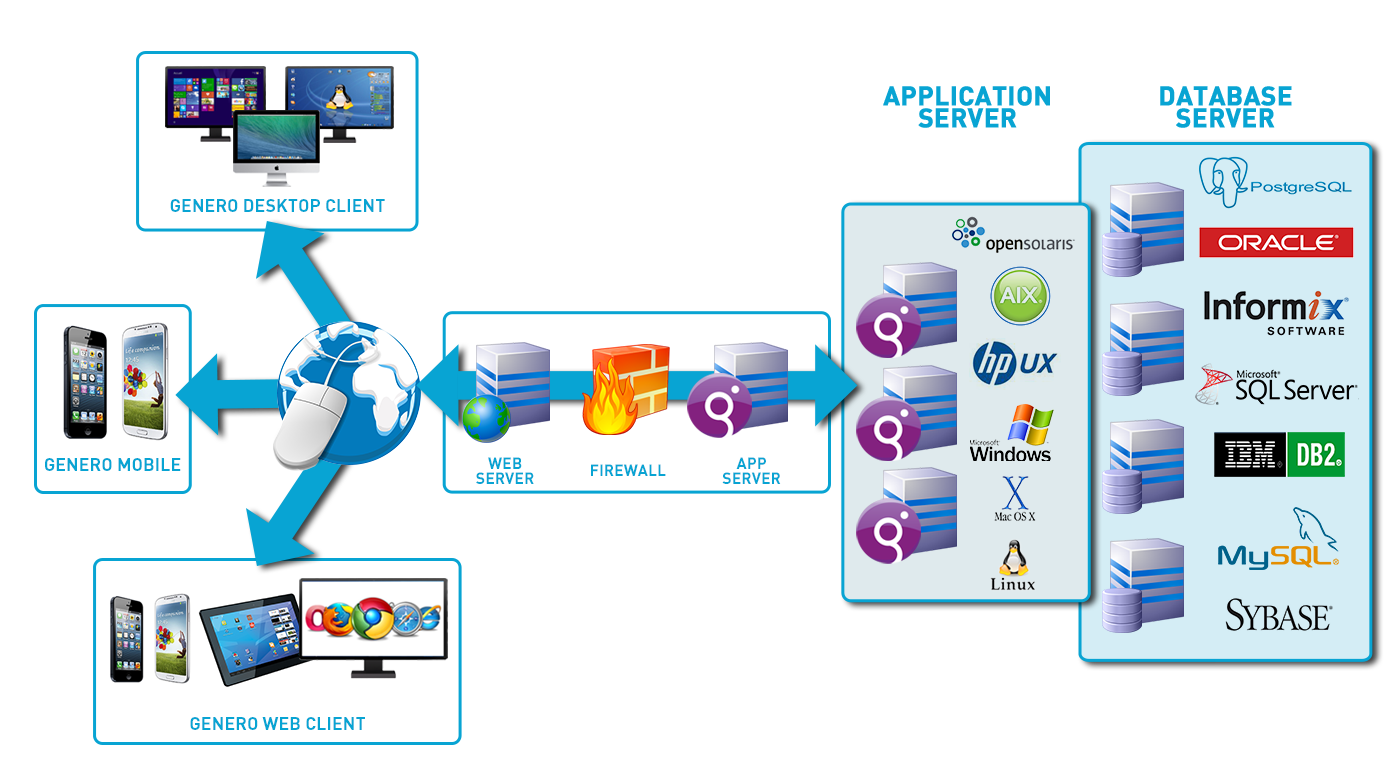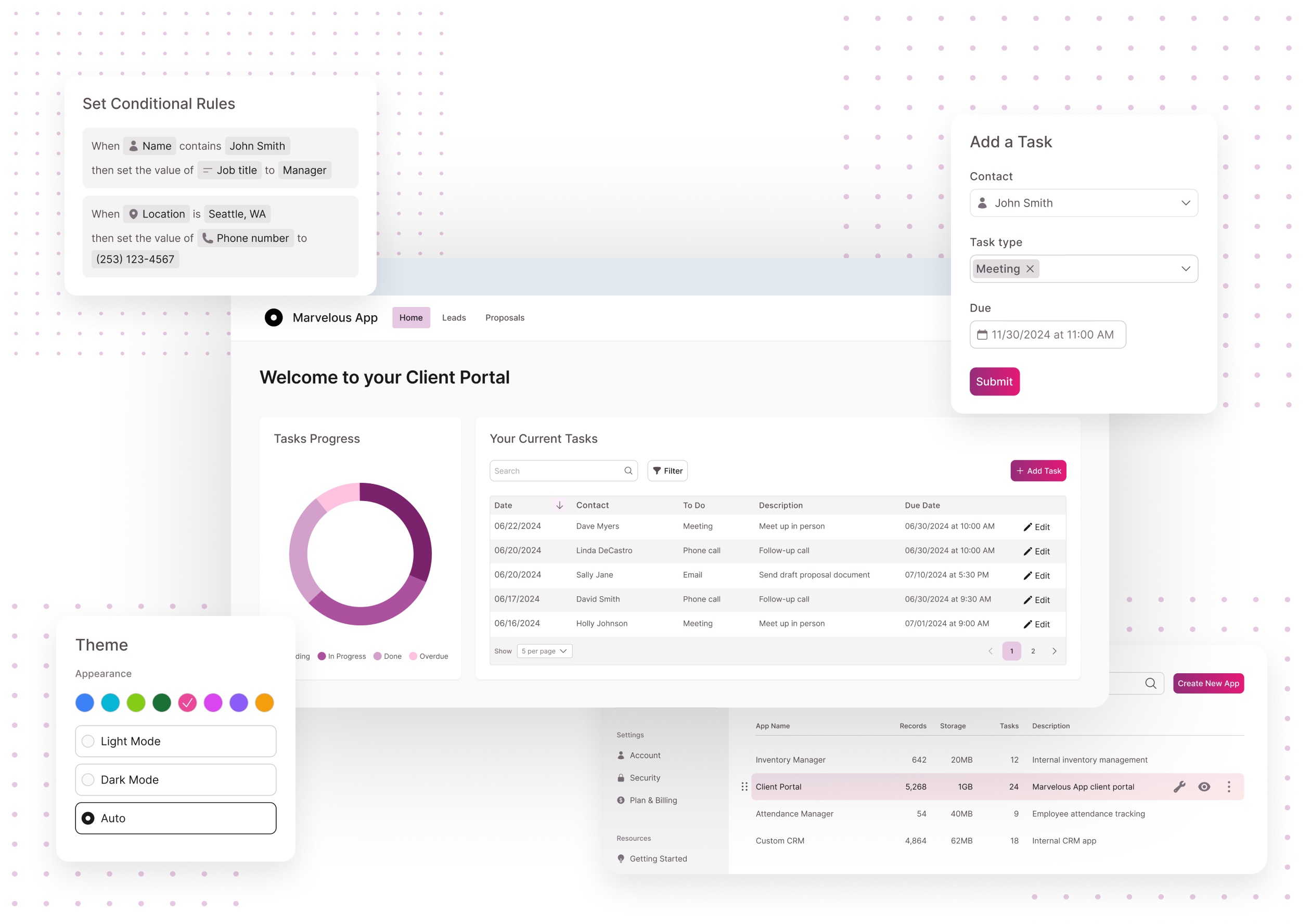No-Code Operating Systems for Open Platform Data Source Development: Save Time and Resources
No-Code Operating Systems for Open Platform Data Source Development: Save Time and Resources
Blog Article
Discovering the Benefits of Scalable Data Sources That Require No Coding Abilities for Efficient Information Management Solutions
The emergence of scalable data sources that eliminate the need for coding abilities offers a transformative chance for companies seeking effective data monitoring remedies. As we take into consideration the effects of such developments, it comes to be important to check out just how they can reshape the landscape of information monitoring and drive lasting growth in a competitive environment.
Boosted Access for Users
Enhanced ease of access for individuals is a critical aspect of scalable databases, making certain that information monitoring systems are user-friendly and user-friendly. In an age where data-driven choices are vital, availability permits a broader array of individuals, including those without considerable technological know-how, to engage with data source systems properly. This democratization of information gain access to promotes enhanced partnership throughout divisions, empowering employees to remove understandings and make notified choices.
Easy to use user interfaces, such as drag-and-drop features and visual data representation, streamline intricate data communications. These enhancements reduce the understanding contour associated with typical database administration, enabling customers to concentrate on leveraging information rather than grappling with technological intricacies. Scalable databases frequently include real-time analytics and adjustable control panels, offering customers with instant understandings customized to their certain demands.

Cost-Effectiveness and Source Savings
Efficient data management not only depends upon access yet additionally on cost-effectiveness and resource cost savings. Scalable data sources developed for customers with no coding skills dramatically decrease monetary worries generally connected with typical database monitoring systems. By removing the requirement for specialized shows competence, companies can designate their resources more efficiently, concentrating funds on core business tasks instead of comprehensive training or hiring skilled employees.
Furthermore, these databases usually make use of cloud-based remedies, which even more decrease prices connected to equipment and maintenance. Organizations can scale their database solutions according to their requirements, avoiding the costs incurred from over-provisioning sources. This versatility indicates companies can adapt to altering demands without incurring unneeded costs, resulting in significant long-term cost savings.
Furthermore, user-friendly interfaces streamline information access and administration procedures, decreasing the moment spent on management jobs. This performance equates right into labor expense financial savings, allowing groups to concentrate on critical initiatives instead of regular maintenance. In general, taking on scalable databases that require no coding skills promotes a more affordable method to information administration, enabling companies to optimize their sources while preserving high degrees of functional performance.
Improved Cooperation Across Teams

In addition, scalable databases assist in seamless interaction among staff member. With user-friendly interfaces that need no coding skills, workers can quickly produce, customize, and share reports or control panels customized to their particular requirements. This democratization of data encourages non-technical Look At This users to contribute understandings, improving the joint atmosphere.
Furthermore, these data sources sustain simultaneous accessibility, permitting numerous users to service the exact same dataset all at once. This feature enhances efficiency, as teams can involve in joint information evaluation without the risk of variation control issues. The ability to leave comments or notes straight within the data source additionally advertises discussion and clears up information analyses.
Streamlined Data Monitoring Processes
In today's data-driven environment, companies recognize the need of structured information administration refines to take full advantage of effectiveness and precision. By leveraging scalable data sources that need no coding abilities, businesses can simplify their data handling and decrease the complexities typically linked with traditional data source systems. This accessibility empowers non-technical users to engage directly with information, promoting quicker decision-making and lowering dependence on specialized IT employees.
Streamlined information management processes improve process by automating regular tasks such as information entrance, recognition, and reporting. Automated data combination makes sure that info from various resources is aggregated perfectly, getting rid of silos and promoting a merged view of Read Full Report critical company metrics (no-code). Straightforward user interfaces enable workers to adjust data easily, allowing them to produce insights that drive critical campaigns without the need for considerable training.
This efficiency not just accelerates functional processes however also reduces the potential for human error, ensuring that data continues to be trusted and accurate. Ultimately, structured information administration procedures with scalable data sources bring about boosted performance, permitting organizations to concentrate on core activities while making sure that their data monitoring methods are reliable and efficient.
Scalability for Expanding Services

For broadening ventures, the Related Site capability to scale up or down is critical. A scalable database can take care of an influx of data created from brand-new customers, products, or services, guaranteeing that organization procedures stay continuous. These data sources give the capacity to take care of peak lots successfully, which is vital throughout periods of quick growth or seasonal spikes.
Furthermore, numerous scalable database remedies are designed with easy to use user interfaces that require no coding abilities, encouraging non-technical team to handle information successfully (no-code). This democratization of data administration allows companies to designate sources strategically and decrease dependence on specialized IT workers
Inevitably, embracing a scalable data source not only enhances operational performance yet also promotes an environment where companies can progress and introduce without the restraints of conventional data source systems. This adaptability settings companies for long-lasting success in today's affordable landscape.
Conclusion
Finally, scalable data sources that call for no coding abilities give considerable benefits for efficient data management. These systems improve availability for non-technical individuals, minimize functional expenses, and promote cooperation throughout teams. By enhancing data administration processes and supplying scalability for growing companies, such solutions enable organizations to adjust to transforming demands effectively. Inevitably, the adoption of these user-friendly data sources fosters technology and placements services for long-term success in a dynamic atmosphere.
Enhanced accessibility for customers is an important element of scalable data sources, ensuring that information administration systems are instinctive and user-friendly.User-friendly user interfaces, such as drag-and-drop functions and visual information representation, streamline complicated data interactions. On the whole, taking on scalable databases that require no coding abilities cultivates a much more cost-efficient technique to information management, enabling companies to maximize their resources while keeping high levels of operational effectiveness.
By leveraging scalable data sources that need no coding abilities, businesses can simplify their information handling and lower the complexities generally connected with traditional database systems - no-code.Streamlined information administration procedures improve operations by automating routine jobs such as information entrance, recognition, and coverage
Report this page